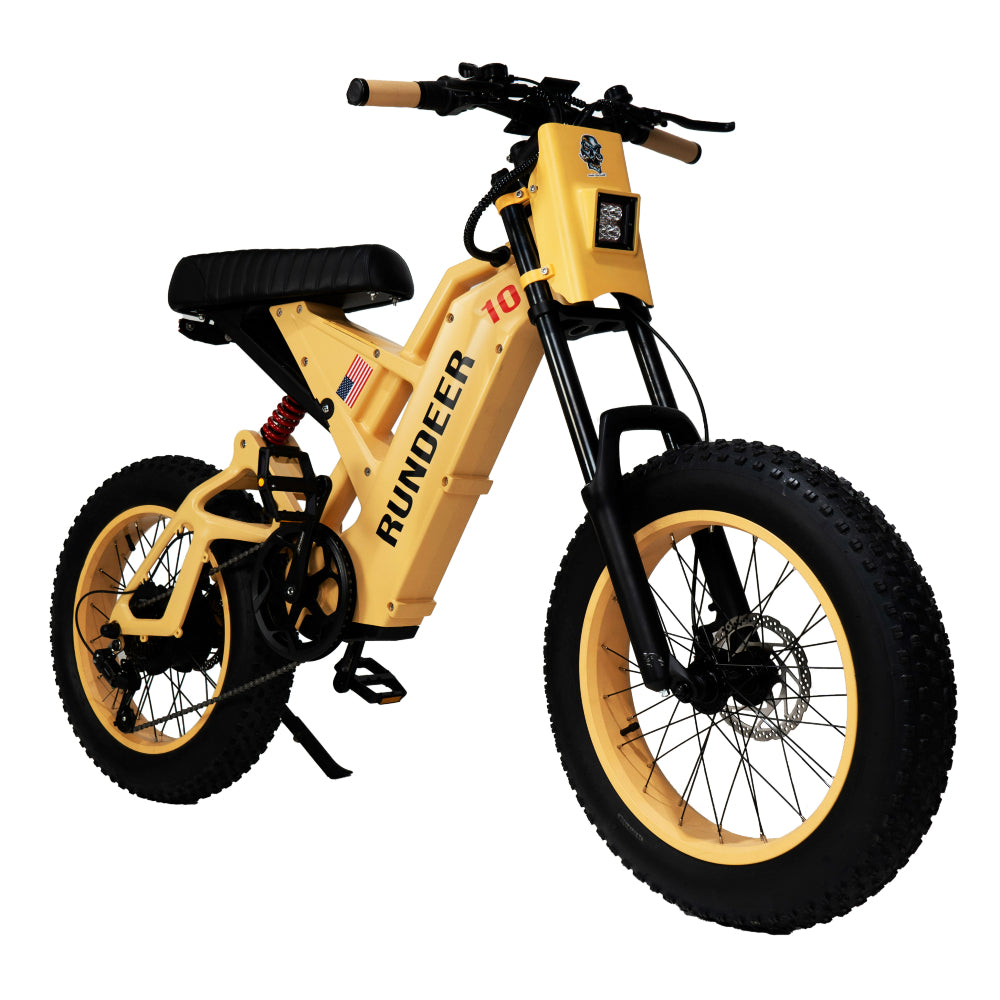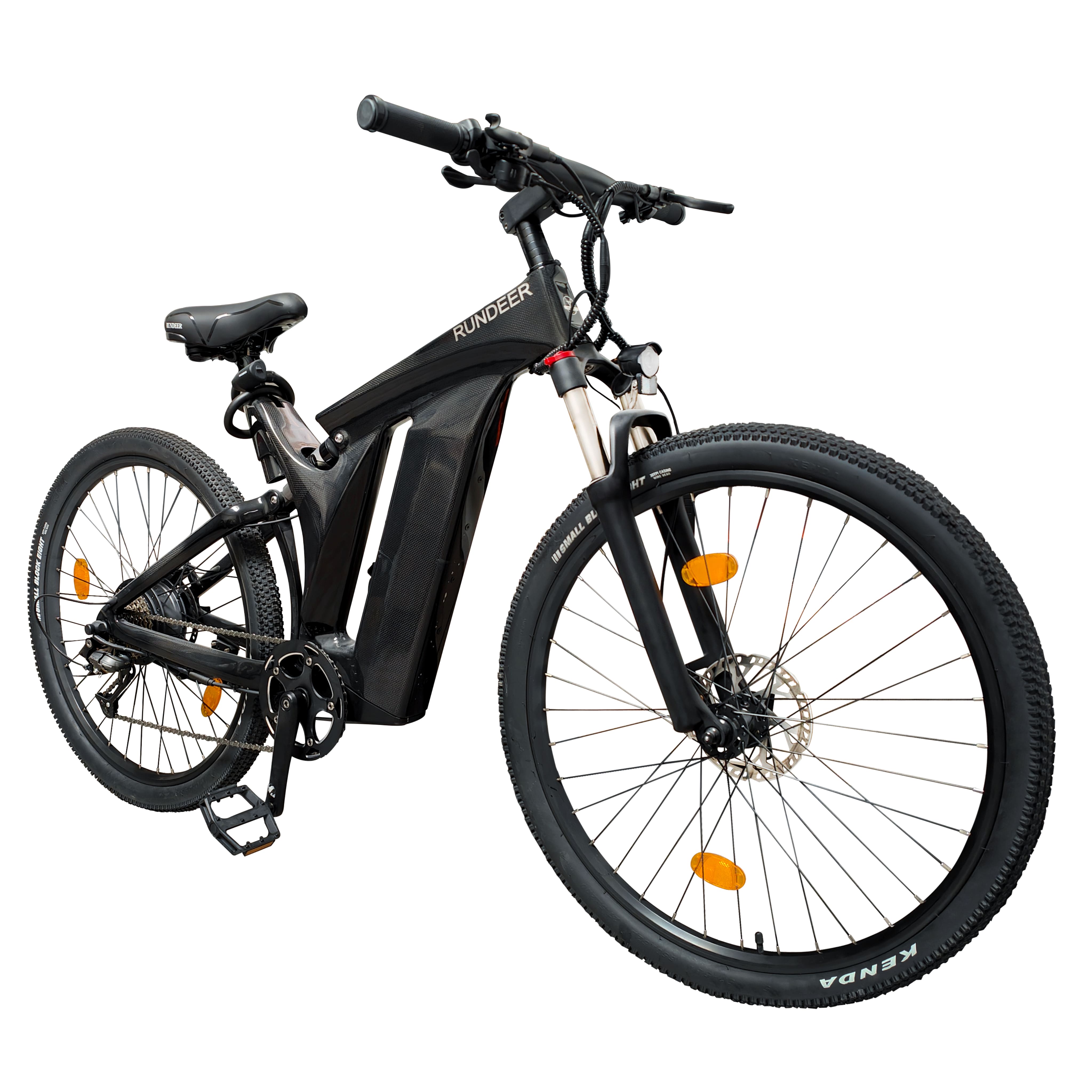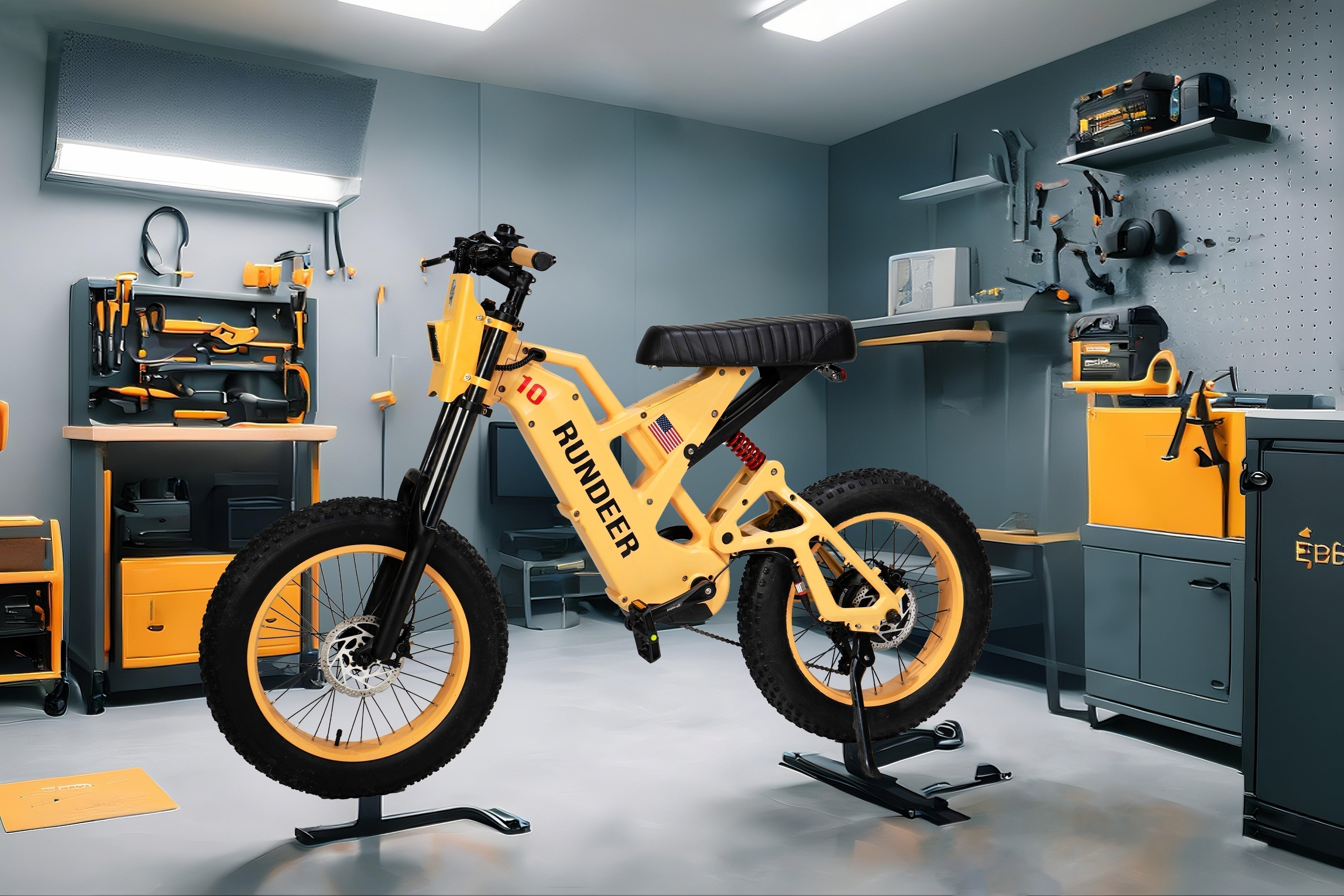The off-road e-bike combines the thrill of traditional mountain biking with the advantages of electric assistance. The multi-able machines allow riders to travel farther, climb higher, and engage with the natural world in ways that were previously impossible for a great many individuals. Whether you need to conquer challenging trails, commute across varied terrain, or simply enjoy the outdoors with less exertion, an off-road e-bike may be your perfect companion. What follows is a guide to take you through the most important considerations in purchasing your first off-road electric bike, so you can sort through the myriad of choices and pick the perfect match for your adventure needs.
Why Go Off-Road with an E-Bike
Get Close to Nature
Off-road e-bikes offer a unique opportunity to explore nature with less disturbance to the environment. Unlike noisier motorized vehicles, e-bikes allow you to approach wildlife without disturbing the peace of the wilderness. The electric assist allows you to go further on a single outing, reaching lookout points and attractions that would take a full day's hike or be inaccessible by car.
Enjoy Versatility
One of the most compelling reasons to choose an off-road e-bike is the versatility it offers. From tackling steep, rocky hills to gliding along forest tracks or sandy beaches, these bikes are designed to tackle diverse terrain with ease. The combination of human power and electric power delivers a stimulating feeling that combines physical engagement with the thrill of powered cycling.
Keep Health and Fitness
Contrary to the beliefs of some, e-bike riding remains excellent exercise. Off-road e-cycling engages core muscles, enhances balance and coordination, and provides cardiovascular exercise that can be adjusted based on your fitness level. Having the ability to regulate the level of assist enables you to develop strength and endurance progressively and enjoy longer rides than you might attempt on a conventional bike. In addition, outdoor time benefits mental health by reducing stress and enhancing mood through exposure to nature.

How to Determine Your E-Bike Riding Style and Purpose
Identify Your Primary Use
Before investing in an off-road e-bike, consider how you'll primarily use it:
- Recreational Trail Riding: If weekend adventures and exploring nature trails are your goal, you'll want a bike optimized for comfort over longer periods with good suspension for varied terrain.
- Off-Road Commuting: For those using trails as part of their daily commute, durability, range, and cargo capacity might take precedence.
- Adventure Biking: If you're planning multi-day excursions or challenging terrain adventures, focus on battery capacity, durability, and component quality.
Assess Typical Riding Conditions
The terrain you'll most frequently encounter should heavily influence your choice:
- Smooth Dirt Trails: These require less aggressive tires and suspension.
- Rocky, Technical Paths: Look for robust suspension systems and higher torque motors.
- Muddy or Sandy Terrain: Fat tires and high clearance become essential features.
- Mixed Surfaces: Consider versatile options that perform well across different conditions.
Evaluate Personal Preferences
Your individual preferences matter significantly:
- Comfort: Consider frame geometry, saddle quality, and handlebar style.
- Speed: Different models offer various top speeds and acceleration capabilities.
- Control: Some riders prefer more responsive handling, while others value stability.
- Riding Position: Upright or forward-leaning postures suit different riding styles and comfort requirements.
What Sets Off-Road E-Bikes Apart
Key Features of Off-Road E-Bikes
Off-road electric bikes are distinguished by several essential characteristics:
- Robust Frames: Typically constructed from aluminum or carbon fiber to balance strength with weight.
- Enhanced Suspension: Front suspension forks are standard, while full-suspension models offer additional rear shock absorption for more challenging terrain.
- Specialized Tires: Wider tires with aggressive tread patterns provide traction on loose or uneven surfaces.
- Higher Clearance: Increased ground clearance helps navigate obstacles without damaging the bike's components.
- Waterproofing: Better sealing to protect electrical components from water and dust.
Technology and Specifications
Understanding the technical aspects will help you make informed comparisons:
- Battery Capacity: Measured in watt-hours (Wh), higher capacity means longer range but adds weight. Most off-road e-bikes offer between 400-750Wh.
- Motor Types: Hub motors are simpler and less expensive, while mid-drive motors offer better weight distribution and more natural power delivery for off-road conditions.
- Motor Power: Usually measured in watts, with most recreational off-road models ranging from 250W to 750W (legal limits vary by region).
- Torque: Measured in Newton meters (Nm), higher torque (70+Nm) provides better hill-climbing ability and acceleration.
- Suspension Travel: The distance your suspension can compress, typically 100-170mm for off-road front suspension forks.

Advantages Over Traditional Bikes
Off-road e-bikes offer several benefits compared to conventional mountain bikes:
- Accessible Exploration: Reach remote locations without exhaustion.
- Extended Range: Cover more distance on a single outing.
- Hill-Climbing Ability: Conquer steep ascents that might be impossible on a traditional bike.
- Energy Conservation: Save energy on difficult sections to enjoy more technical descents.
- Confidence Building: The power assist can help newer riders develop skills and confidence on challenging terrain.
Which Off-Road E-Bike is Best for You
The choice of the correct off-road electric bike (e-bike) type matters as it directly affects your ride and your ability to surmount various terrains. Every e-bike type is designed with specific features to fit a certain environment and ride type.
Types of Off-Road E-Bikes
Off-road e-bikes are divided into various types, each for certain purposes:
-
Electric Mountain Bikes (eMTBs): Off-road cycling's lifeblood; these bikes are famous for their strength and ability to pedal on challenging trails. They usually feature progressive geometry for better control on technical trails and big suspension travel for absorbing bumps from rough terrain. Within this category, you can anticipate:
- Trail eMTBs: Trail eMTBs are comfortable on a wide range of terrain and are the perfect all-rounders. They usually have moderate suspension travel of 120mm to 140mm, which allows them to be comfortable when ascending as well as descending.
- Enduro eMTBs: Serious adventurers tackling steep, technical downhill runs use enduro eMTBs, which feature more aggressive suspension systems with more than 150mm of travel. Their sturdy frames and powerful motors make tough ascents and bumpy downhill courses possible.
- Cross-Country eMTBs: Designed with efficiency and speed in mind for riding over less challenging terrain, cross-country eMTBs are lightweight and built for long distances at high speed. Ideal if your route involves smooth trails and the occasional incline.
- Fat Tire E-Bikes: They have wider-than-standard tires (typically 4-5 inches) and provide greater traction on loose or soft ground such as sand, snow, or mud. While the added stability is ideal for such conditions, they can be less agile and heavier than other designs and less comfortable on narrower or more technical terrain.
- Hardtail vs. Full-Suspension: Hardtail e-bikes, with only front suspension, are generally cheaper and require less maintenance, making them ideal for beginners and those who ride on smooth surfaces. Full-suspension bikes, however, deliver higher comfort and handling on rough or bumpy ground with both front and rear suspension units.
Matching Bike Type to Terrain
To derive the most out of your off-road adventure, you'll be required to match your selection of e-bike to what you'll be riding on:
- Forest Trails and Dirt Paths: A trail eMTB with medium travel (120-140mm) or a hardtail eMTB is sufficient for these types of terrain, providing balance and comfort on rolling surfaces.
- Rocky, Technical Terrain: Select a full-suspension enduro eMTB with a minimum travel of 150mm. This configuration gives you the shock absorption and control that you require to tackle challenging rock-strewn trails without any risk.
- Sandy or Snowy Areas: Fat tire e-bikes should be utilized in such places, offering excellent grip and stability, preventing sinking in soft ground, and smooth mobility.
- Mixed Terrain with Road Sections: In the case of those routes with alternating road and off-road segments, a variable trail eMTB with lockable or adjustable suspension will add the versatility to cope with both conditions efficiently.
With such a wise choice on these options in consideration of your use plan and prevailing conditions, you can possess an off-road e-bike that is exactly ideal for your adventure plan and infuses excitement to your riding.

How to Prepare for Safe and Enjoyable E-Bike Rides
Essential Safety Gear
Never compromise on safety equipment:
- Helmet: A must-have, preferably a mountain bike specific design with good coverage.
- Gloves: Protect hands during falls and reduce vibration fatigue.
- Eye Protection: Shield eyes from debris, insects, and branches.
- Knee and Elbow Pads: Recommended for technical terrain or when learning.
- Appropriate Footwear: Closed-toe shoes with good grip and ankle support.
Basic Maintenance Skills
Develop these fundamental skills:
- Tire Pressure Adjustment: Different terrains require varying pressures for optimal performance.
- Drive Train Cleaning: Regular cleaning extends component life.
- Battery Care: Proper charging and storage practices maximize battery lifespan.
- Basic Adjustments: Learn to adjust brakes, shifters, and suspension settings.
- Pre-Ride Checks: Develop a routine safety inspection habit before rides.
Riding Etiquette and Laws
Be informed and responsible:
- Trail Access Regulations: Know where e-bikes are permitted and any class restrictions.
- Speed Limits: Respect posted limits and ride at appropriate speeds for conditions.
- Right of Way Practices: Learn who has priority on multi-use trails (typically: horses > hikers > cyclists).
- Environmental Responsibility: Stay on designated trails to minimize ecological impact.
- Local Motor Vehicle Laws: Understand how e-bikes are classified in your region and what rules apply.
Making Your Off-Road E-Bike Rides More Fun
An off-road e-bike opens up a universe of possibilities, allowing you to experience the wonders of nature in new and exciting ways. The combination of human muscle and electricity creates a unique recreational experience that is part exercise and part adventure. With advances in technology and expanding trail networks, off-road e-biking will be more convenient and enjoyable. The journey of discovering new trails and mastering your riding abilities is as thrilling as arriving at the destination. Join the growing number of off-road e-bikers – the world of adventure awaits you!













